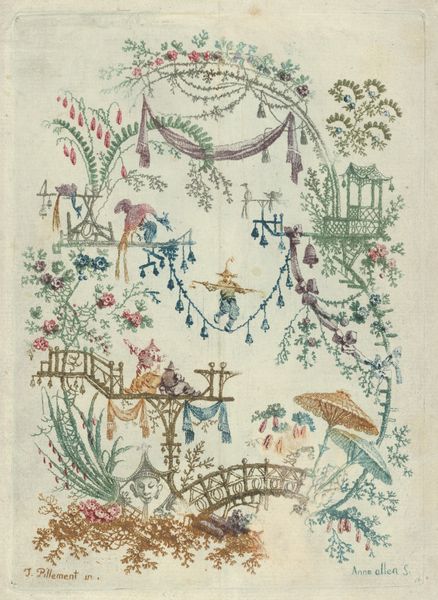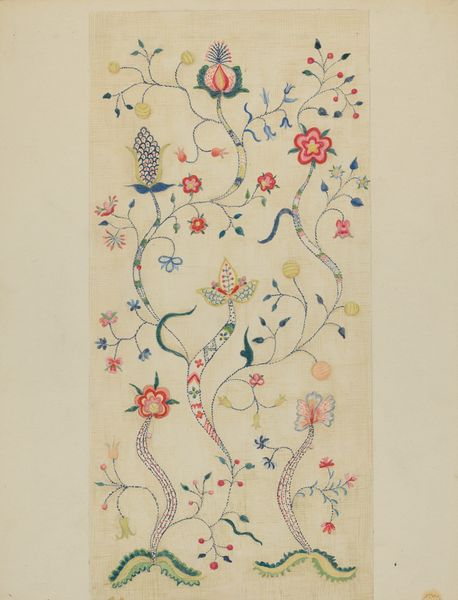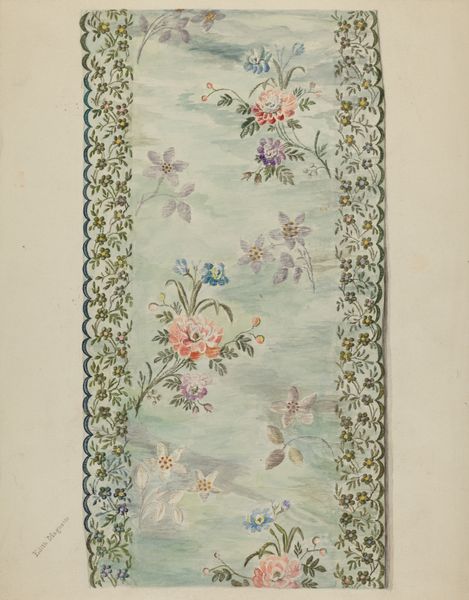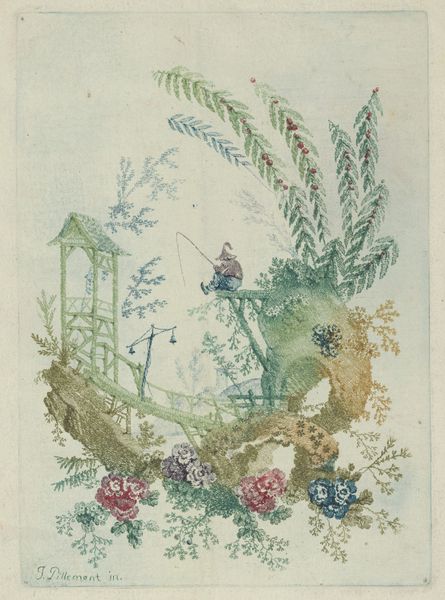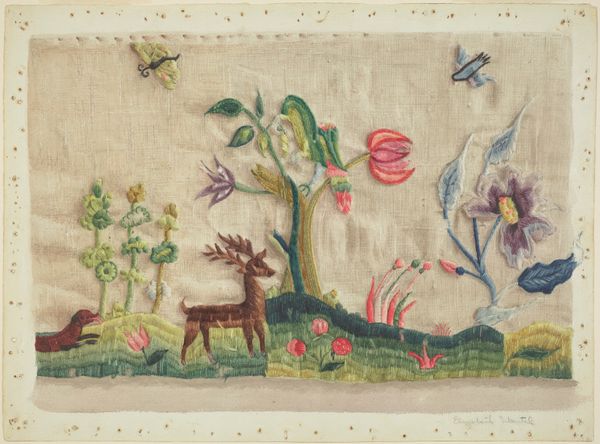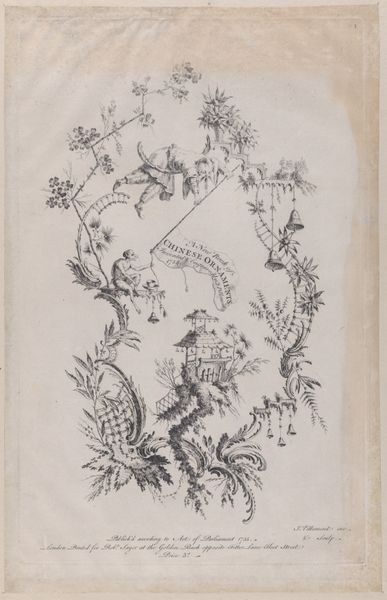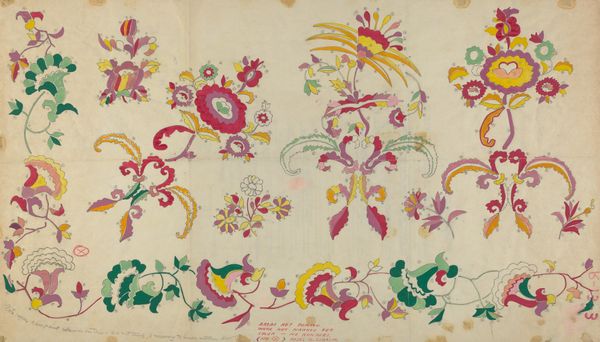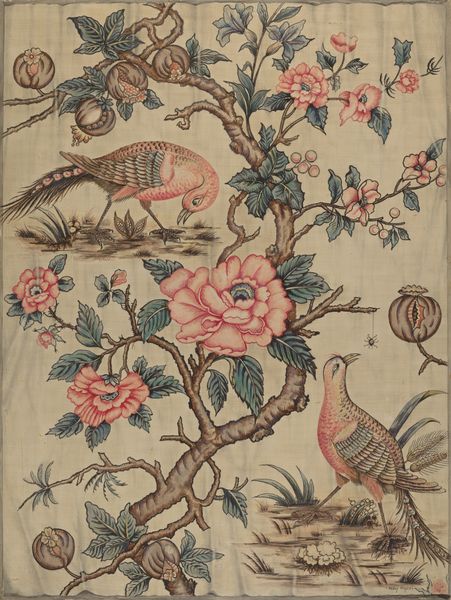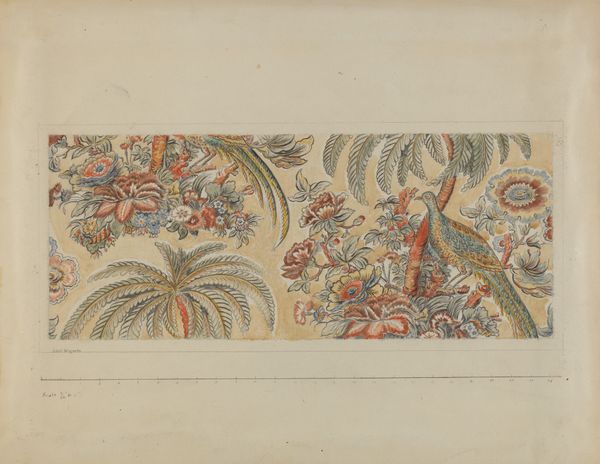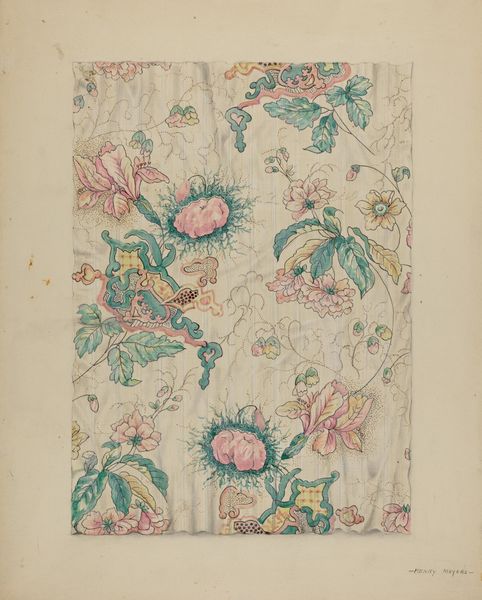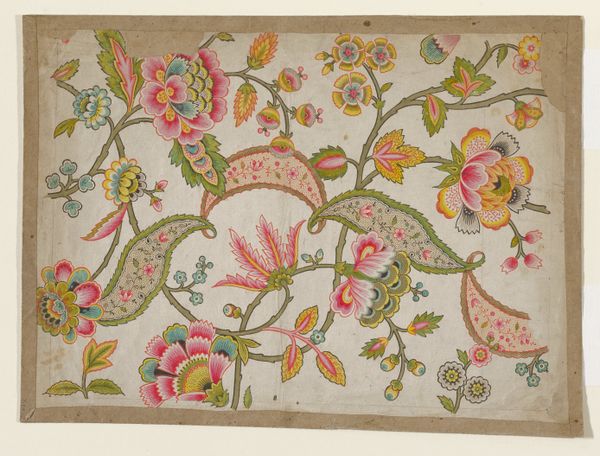
Chinoiserie from Nouvelle Suite de Cahiers Arabesques Chinois 1790s
0:00
0:00
Dimensions: Plate: 7 11/16 × 5 1/2 in. (19.5 × 13.9 cm) Sheet: 8 3/4 × 6 1/16 in. (22.3 × 15.4 cm)
Copyright: Public Domain
Curator: This is “Chinoiserie from Nouvelle Suite de Cahiers Arabesques Chinois,” a watercolor drawing from the 1790s by Jean Pillement, now residing at The Met. Editor: It's quite enchanting! I'm struck by its delicate nature and how it depicts a fantastical vision of Asian culture. It seems like a very romanticized interpretation. What kind of societal factors might have influenced this representation? Curator: Excellent question! This work exemplifies Chinoiserie, a Western artistic style reflecting European fascination with China and East Asia during the 18th century. This wasn’t about accurate representation but projection. Colonization played a central role; European powers sought to expand trade with Asia but often imposed unequal treaties. Consider how the artist’s perspective might be shaped by the societal impulse to exoticize a culture. Do you see how the figures and scenes are placed within an idealized, almost dreamlike setting? Editor: Absolutely, the artist seems to be crafting a fantasy rather than capturing a true likeness. Is that why some view this type of art as problematic now? Curator: Precisely. While Chinoiserie introduced Eastern aesthetics to the West, it simultaneously perpetuated stereotypes and often justified colonial ambitions by portraying Asian cultures as ornamental or submissive. Think about the power dynamics inherent in such representation and how they relate to broader political landscapes. It served a European consumer base keen for the exotic but indifferent to the realities of Asian life. Editor: It’s eye-opening to consider art through that historical lens. I was initially drawn in by the whimsy, but understanding the context really changes how I interpret the image. Curator: Understanding how art intersects with historical and cultural power structures enriches our interpretation, transforming our initial response into a more critical and informed perspective. This challenges us to consider the responsibilities and ethics embedded in image-making and viewing. Editor: Thanks for pointing that out! I’ll definitely keep the social implications in mind as I continue to study and engage with more works like this one.
Comments
No comments
Be the first to comment and join the conversation on the ultimate creative platform.
